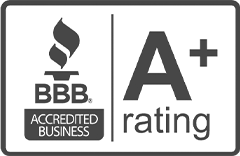
Do you drive a stick, or does the thought of it make you want to jump into your automatic vehicle and drive away? While automatic vehicles have become the norm, there are several advantages and disadvantages to driving a car with a manual transmission.
Advantages
Besides being fun to drive (for those who know how!), stick shift vehicles benefit drivers in a few ways:
- Easier to maintain. Since they are less complex than automatics, there is less of a chance for something to go wrong. The clutch is the only item that generally needs repair, but for the most part that isn’t needed for hundreds of thousands of miles.
- Use of gear or engine oil. This fluid deteriorates less quickly and doesn’t require frequent changes.
- Better fuel economy. Automatic vehicles have a torque converter and hydraulic pump, which robs the car of a percentage of its fuel efficiency. Those who drive manual vehicles can increase fuel economy by as much as 15 percent.
- More control. Braking is easier without the torque converter found in automatic vehicles.
- Cheaper. In general, brand-new stick shift vehicles are cheaper than their automatic counterparts.
Disadvantages
- Learning curve. Those learning to drive a manual can expect the first few rides to involve jerking and stalling while becoming accustomed to the clutch and shift timing.
- Difficulty on hills. Stopping on a hill and starting again can be inconvenient as well as scary. Since the vehicle rolls back, drivers have rolled into traffic or stalled.
- Pain from the clutch. Your left leg will be in constant use when driving a stick shift car. Over time, it can mess with the joints in the leg.
Driving a car with manual transmission takes time and patience. If you are in the process of deciding which transmission to choose, weigh these advantages and disadvantages.
Courtesy of NY Daily News
http://www.nydailynews.com/autos/driving-stick-pros-cons-manual-transmissions-article-1.1247896


